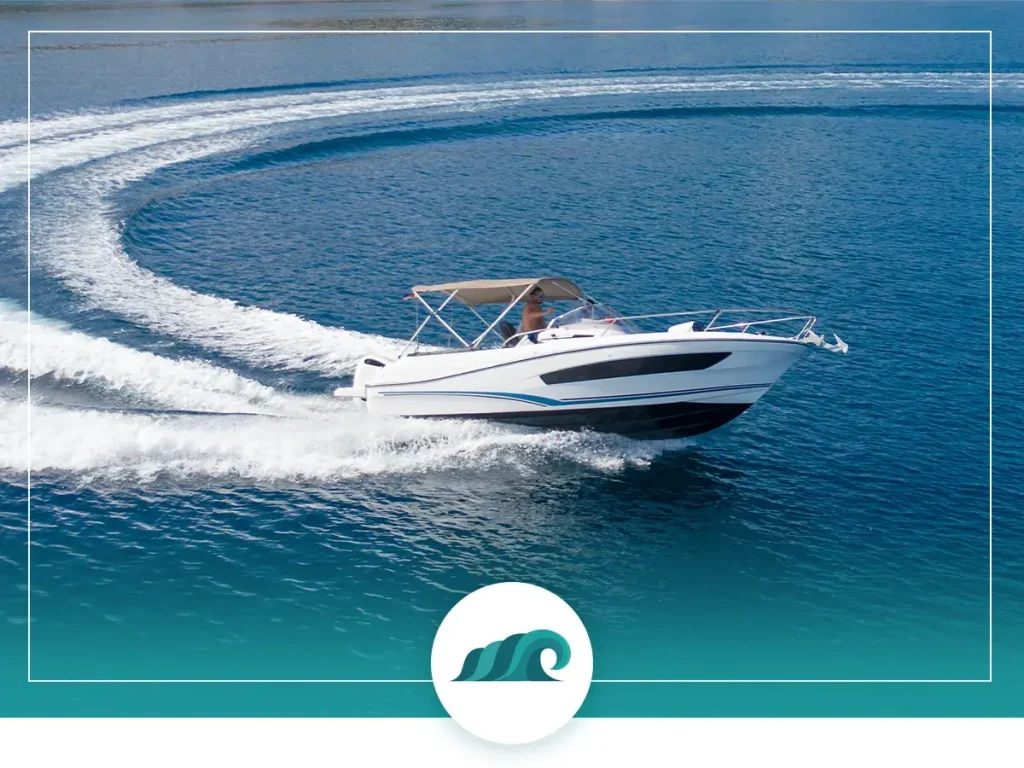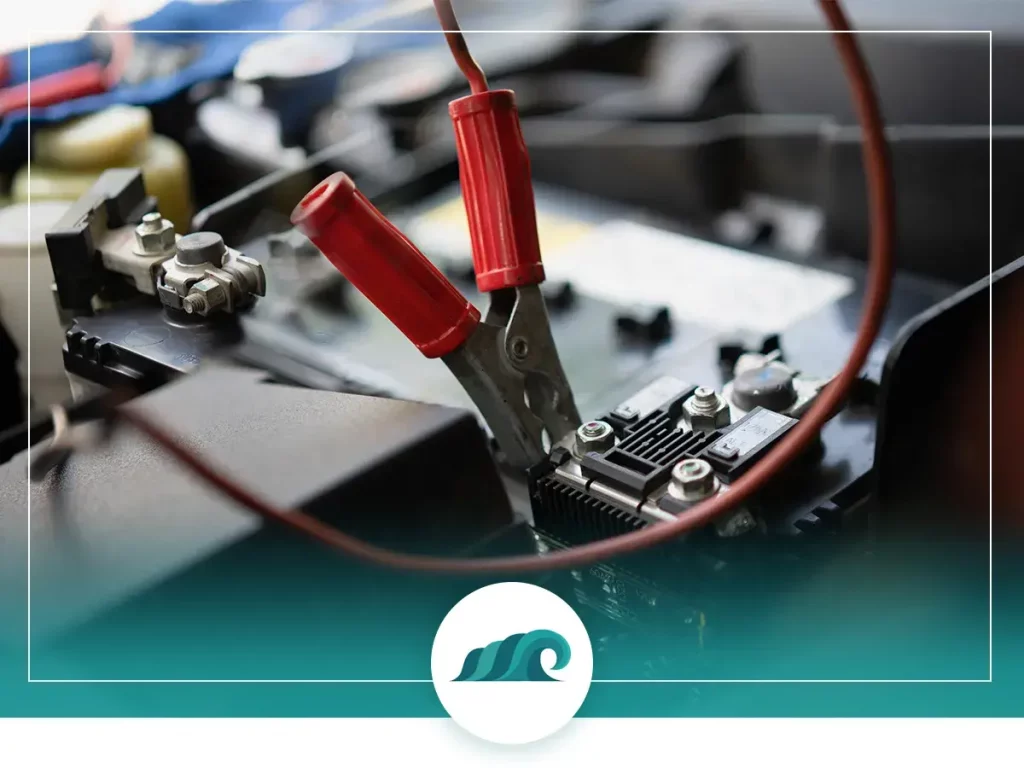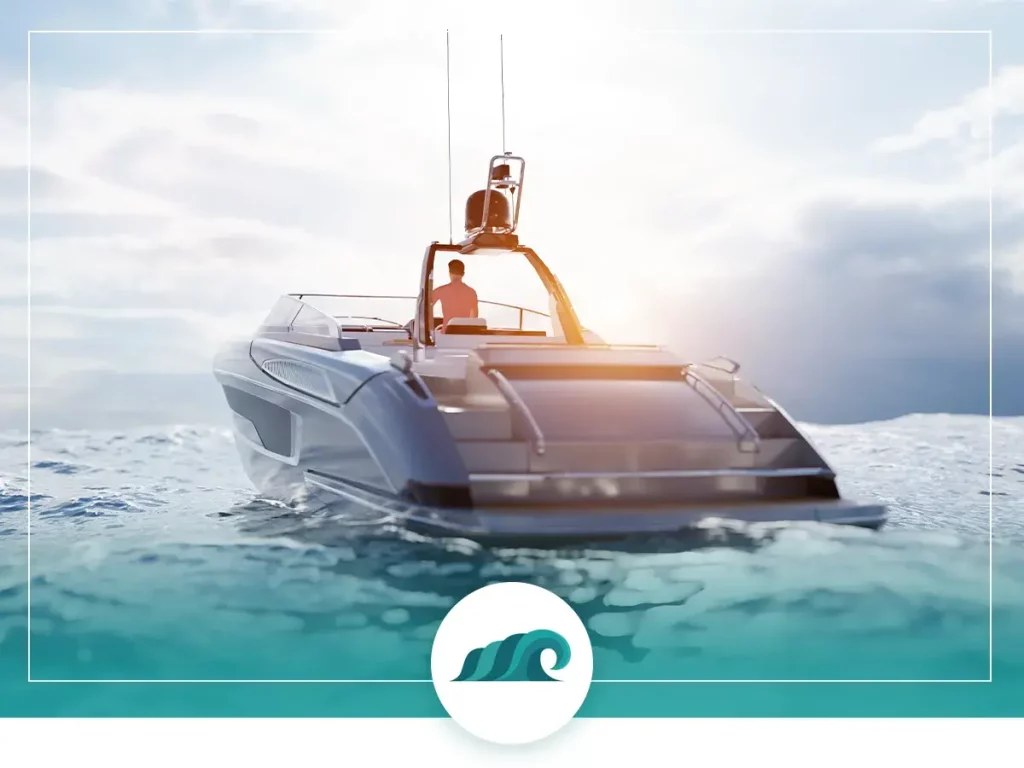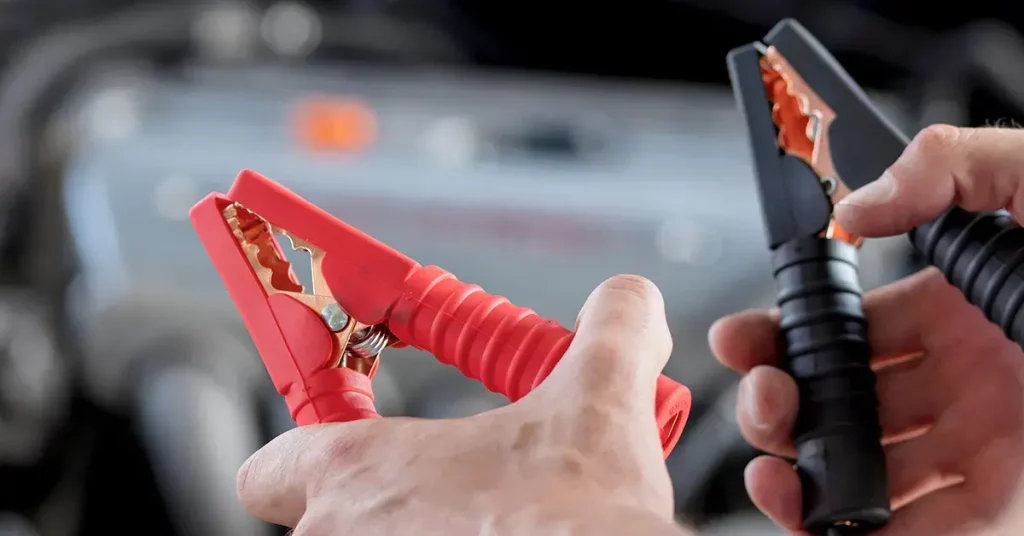If you want to extend the life of your marine batteries, you’ll need one of the best marine battery chargers. Boat batteries aren’t cheap – so getting the right charger for your battery will not only charge it faster – it will also save you money in the long run.
Properly maintained marine batteries can easily last 5 years or more. On the flip side, if you use a poor-quality charger and bad battery management practices, you’ll end up ruining your battery’s performance far before the typical battery lifespan expires.
With so many different marine battery types, sizes, and price points, picking the right charger can seem like an impossible task. I’ll break down what you need to know to pick the best marine battery charger for you and your craft.
Quick Answer: 5 Best Marine Battery Chargers
- Best Overall: NOCO Genius
- Runner Up: Guest ChargePro On-Board Battery Charger
- Best High End: Minn Kota Precision On-Board Charger
- Best Portable Charger: Minn Kota Portable Digital Charger
- Budget Pick: BMK 12V 5A Smart Battery Charger
Marine Battery Charger Selection

Before we get to the best marine battery chargers, let’s take a look at some of the key features to consider.
Onboard vs. Portable
Before you consider different chargers, you’ll need to decide whether you want an onboard charger or a portable unit.
Onboard chargers (also called linear chargers) are larger chargers suited to large and medium sized boats with multiple batteries or deep cycle trolling motor batteries. On board chargers, like their name suggests, are mounted to your craft, and are typically water resistant and utilize a vented design to prevent overheating.
These can be used to recharge both deep cycle and cranking batteries, and many feature integrated battery monitoring and digital protection to keep your batteries healthy over the long run. Due to their added power and functionality, they require a bit more room in your craft than portable chargers.
Portable chargers are compact, lightweight, and ideal for smaller craft like kayaks, canoes, and dinghies. They’re significantly cheaper than their larger onboard counterparts, but don’t provide the same level of battery protection or charging speed.
If you only use your marine battery occasionally, or don’t have enough room for an onboard charger, then these chargers make an excellent option.
Number of Banks
The number of power banks is another key consideration when picking out a charger. Each bank can be hooked up to a separate 12V battery, so if your running multiple batteries, you’ll want a charger that can charge them all simultaneously.
A three-bank charger gives you the ability to charge two 12V deep cycle batteries as well as your cranking battery all at once. If you’ve got a larger 24V trolling motor, then this will come handy – so you won’t have to charge one battery at a time.
As you might expect, the more banks the charger has, the more expensive it will be. If you use your craft frequently, or on back to back days, then going with additional power banks makes sense.
Battery Type
Before you pick out a battery charger, you’ll need to make sure its compatible with your existing battery type. Marine batteries vary significantly in design and materials, so you’ll want to be sure your matching the correct battery and charger type.
Chargers for AGM batteries will feature different charging settings than those for lead acid or Gel batteries. Gel batteries require a very narrow charging profile, so using anything other than a ‘Gel’ specific charger can result in long-term damage to the battery.
The same goes for AGM batteries, so you’ll want to make sure your charger is specifically designed to charge this battery type. Lead acid batteries are the most forgiving when it comes to charging, but should still be charged using an appropriate charger.
Many newer high-end chargers feature different charging modes designed to provide the ideal charging settings for each battery type.
Charge Time
Charge time (or recovery time) refers to the time it takes to fully recharge your battery after its drained. This time will vary depending on the size of your battery as well as the performance of your charger.
As you might expect, higher-end on board marine battery chargers will feature faster recovery times than cheaper portable chargers will. Some of these chargers can put out up to 15 amps per bank, making rapidly recharging all of your boat’s batteries a reality.
Best Overall: NOCO Genius
When it comes to onboard battery charging, you’ll have a hard time beating the rugged performance and advanced charging capabilities of the Noco Genius. It’s one of the most advanced marine battery chargers in its class, with the ability to charge wet cell, gel, AGM, and deep-cycle batteries.
Available in four different configurations (from 1-Bank up to 3-Banks), there is an ideal sized charger for nearly everyone. The charger comes feature packed with advanced safety protection, spark-proof technology, as well as thermal, ignition, reverse polarity and overcharge protection.
The rugged ip68 waterproof construction is capable of underwater submersion down to 3 meters – so you won’t need to worry if things get wet and wild out on the water. It’s a true smart charger designed to continuously monitor your battery health, shutting off automatically when fully charged, and altering the charging process based on organic battery feedback.
Noco designed the charger to be extremely easy to install – allowing you to set it up in any direction you like – so you have plenty of versatility when it comes to setup. All you need for setup the charger is a few zip ties and some basic tools.
Key Features
- Smart charging technology stabilizes battery chemistry for increased performance
- Alters charging process based on battery feedback
- Capable of recovering batteries with lost capacity
- IP68 waterproofing
- Built-in protection from overcharging, sparks, short-circuits, reverse polarity and overheating
Runner Up: Guest ChargePro On-Board Battery Charger
Fast, efficient, and easy-to-use, these completely redesigned chargers from Guest are one of the best options for on-board charging available now. Each bank features a dedicated charging, sensing, and control unit, while the easy to read LED charge status monitor gives you an accurate battery life reading for each battery bank.
The entire unit is 100 percent waterproof and shockproof – rated to IP67 – making it ideal for any freshwater or saltwater applications. The microprocessor-controlled charger is capable of charging any 12V flooded or AGM battery, while the fully automatic 5-stage charging sequence ensures maximal battery performance and life span.
Low profile and lightweight sealed aluminium housing make the entire unit easy to mount, and helps contribute to increased heat dissipation and longevity. Like other smart chargers it comes with plenty of built-in safety features including: reverse polarity, over-charging, over-heating, over-voltage, ignition protection, and in-line fuses for maximum DC wire protection.
Available in a variety of configurations, from a single bank 5-amp charger for small craft up to a 4-bank 10 amp for charging 4 batteries simultaneously, you can easily find the right one for your needs.
Key Features
- Easy-to-read LED graphics indicate battery bank status
- Fully automatic 5 stage high performance charging
- Suitable for all 12V flooded and AGM marine batteries
- Auto-maintain mode for energy savings
- Completely waterproof and shock resistant
Best High End: Minn Kota Precision On-Board Charger
When it comes to marine battery chargers, it’s tough to get more bang for your buck than the Minn Kota Precision chargers. These chargers are jam packed with cutting edge battery charging tech that makes charging and maintaining a variety of different battery types a breeze.
Each charging bank can be selected to charge a different battery type (flooded lead acid, AGM or gel), so you can charge batteries with different charging profiles simultaneously. Automatic temperature compensation monitors and adjusts to the ambient temperature – increasing charging efficiency.
Advanced multi-stage charging ensures your batteries always receive the correct voltage and current, while digital controls deliver a precise level of voltage for each power bank. If you’re running lead acid batteries, the charger automatically cleans and protect the cells, as well as provides deep cleaning at the push of a button.
Easy-to-read LED lights give you a precise reading of the charging stage, as well as error notifications. Different colored LEDs correspond to different battery statuses – yellow and green for charging in progress and charging cycle complete, and red for major errors like a disconnected battery.
Waterproof, shockproof, and vibration resistant, the charger can withstand nearly anything you’re likely to put it through. It also compensates when a power outlet doesn’t put out the 120 volts that it’s supposed to, so you’ll get the right charge even if you’re dealing with faulty wiring.
While they cost a bit more than other chargers, the feature rich design and increased precision more than justifies the higher price tag.
Key Features
- Available in 1 to 4 battery banks (6 amp to 10 amp)
- Built in protection from short circuits, reverse polarity, arc and ignition
- Highly precise digital charging provides ideal voltage levels
- Automatic temperature compensation
- Ideal for lead acid, gel, and AGM batteries
- 3 year manufacturer warranty
Best Portable Charger: Minn Kota Portable Digital Charger
If you’re looking for a compact and portable charger for your boat, then you’ll have a hard time beating this well-made unit from Minn Kota. Its designed to provide many of the same features as an on-board charger, in a compact and lightweight package.
Like the Precision charger reviewed above, the charger will sense and adjust to changes in ambient temperature, increasing charging speed and efficiency. Automatic multi-stage charging adjusts the voltage throughout the charging cycle to provide fast and precise charging. Digital control is also included, so you’re getting the same microprocessor-based charging as more expensive on-board chargers.
LED indicator lights give you an easy-to-read indication of your charging state, maintenance status, full charge, and error notifications. Two different models are available, one with 5-amp output and a larger model with 10-amp output. Both models feature a single battery bank, so you’re limited to charging a single marine battery at a time.
Also keep in mind the charger is not completely waterproof. As it’s not permanently mounted to your craft, this is normally not an issue, but be its good to be aware of when you’re in wet conditions.
Key Features
- Compact, lightweight mobile charger
- Automatic multi-stage charging precisely controls voltage
- Easy-to-read LED indicator lights
- Automatic ambient temperature compensation
- Microprocessor based charging
Budget Pick: BMK 12V 5A Smart Battery Charger
If you’re looking for a functional and well-made marine battery charger without spending an arm and a leg, you’ll have a hard time beating this one. The simple and effective design makes it ideal for charging a single 12-volt battery, and like other chargers, it will function as a maintainer once your battery is topped up.
The single bank charger puts out a respectable 5 Amps, allowing you to fully charge a 50-amp hour battery in approximately 10 hours. Features like over-charge, over-discharge, over-current, short-circuit, and over-heating protection ensures your battery stays healthy no matter what the conditions. Built-in spark-proofing and reverse polarity indicator also make sure you don’t accidentally damage anything.
Like more expensive models, it uses a 4-stage automatic charging process, and an easy-to-read indicator for displaying the charging status. The manufacturer claims it can charge AGM, Gel, and regular lead acid batteries, but if you have an expensive Gel or other advanced battery, I’d look for a specialized charger.
The unit is IP65 rated waterproof, which is an outstanding feature for a charger in this price range.
Key Features
- Smart battery charger for a price everyone can afford
- 4-stage automatic smart charging process
- Easy-to-read LED battery status indicator
- Same safety features as more expensive models
- IP65 waterproofing
How to pick the right marine battery charger

Picking the right battery charger can seem like a challenge. With so many different charger types and configurations, narrowing it down to a single charger can be a little difficult.
Let’s take a look at some of the key factors you ought to consider when picking a charger.
Amps
Amps (short for ampere) are a unit of electrical current. Marine batteries are rated in amp hours, which is a measurement of how many hours the battery can supply a single amp of power for.
Typical marine battery amp hour ratings are between 35- and 120-Amp hours. Deep cycle batteries for running trolling motors usually fall in the upper part of that range.
Marine battery chargers also have an amp rating – which indicates how many amps the charger can put out in one hour from each bank. To calculate the charge time of a given battery, take the battery’s amp hour rating and divide by the charger amp rating. Then add an extra 10% to fully top up the battery.
If you want an illustration on how this works in real-life consider the following:
Cheaper chargers will often feature amp ratings in the 2 to 5 amp range, higher end ones are in the 10 to 15 amp range. Lower amp chargers take significantly longer to recharge larger batteries, so keep this in mind when picking out a charger.
Power Source
Another thing to consider when picking out a charger is your boat’s power source.
If your craft spends most of its time docked, and you have access to continuous AC power, you’ll need a small charger than a boat that only gets AC power intermittently. If you’re also running a power inverter or other power-hungry electronics, then you’ll want to size up.
Boat’s that spend long periods of time on the water away from an AC power source will require more juice than smaller craft. This translates into a more powerful charger with multiple banks – unless you plan to spend all day trickle charging each of your marine batteries.
How not to ruin your batteries

Keeping your boat’s batteries healthy is fairly straightforward, but it’s something many people neglect to take care of. To keep your batteries healthy, make sure to do the following:
- Don’t discharge your batteries completely between charges. So called ‘shallow’ discharges prolong battery life by maintaining optimum capacity.
- Never leave batteries completely drained for a long period of time. Always charge them to full after draining. If you’re storing for a long period of time between uses, connect to a battery maintainer.
- Don’t mix different battery types when charging trolling motor or other boat electronics.
- The ideal battery discharge percentage is between 50 and 80 percent of total capacity. Consistently discharging your battery to this level will extend its lifespan.
- A marine battery box is one of the best upgrades you can use to increase your battery’s lifespan. This is especially useful for smaller craft like canoes and kayaks that don’t come with a built battery tray.




